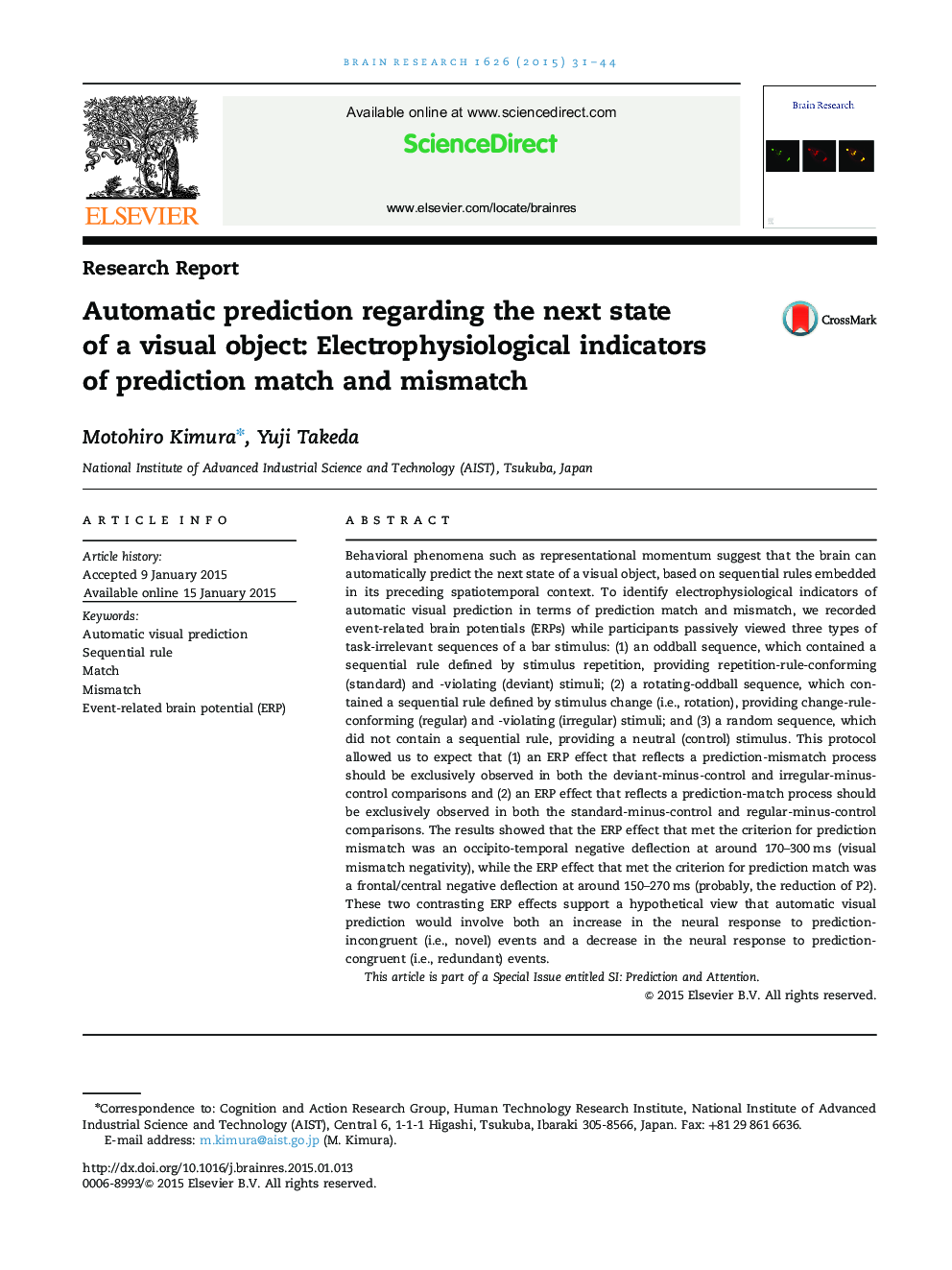| Article ID | Journal | Published Year | Pages | File Type |
|---|---|---|---|---|
| 6262798 | Brain Research | 2015 | 14 Pages |
â¢The human brain can automatically predict the next state of a visual object.â¢The present study aimed to identify ERP indicators of automatic visual prediction.â¢We found that the prediction-mismatch process was reflected by visual MMN.â¢We found that the prediction-match process was reflected by the reduction of P2.â¢Possible mechanisms of automatic visual prediction were discussed.
Behavioral phenomena such as representational momentum suggest that the brain can automatically predict the next state of a visual object, based on sequential rules embedded in its preceding spatiotemporal context. To identify electrophysiological indicators of automatic visual prediction in terms of prediction match and mismatch, we recorded event-related brain potentials (ERPs) while participants passively viewed three types of task-irrelevant sequences of a bar stimulus: (1) an oddball sequence, which contained a sequential rule defined by stimulus repetition, providing repetition-rule-conforming (standard) and -violating (deviant) stimuli; (2) a rotating-oddball sequence, which contained a sequential rule defined by stimulus change (i.e., rotation), providing change-rule-conforming (regular) and -violating (irregular) stimuli; and (3) a random sequence, which did not contain a sequential rule, providing a neutral (control) stimulus. This protocol allowed us to expect that (1) an ERP effect that reflects a prediction-mismatch process should be exclusively observed in both the deviant-minus-control and irregular-minus-control comparisons and (2) an ERP effect that reflects a prediction-match process should be exclusively observed in both the standard-minus-control and regular-minus-control comparisons. The results showed that the ERP effect that met the criterion for prediction mismatch was an occipito-temporal negative deflection at around 170-300Â ms (visual mismatch negativity), while the ERP effect that met the criterion for prediction match was a frontal/central negative deflection at around 150-270Â ms (probably, the reduction of P2). These two contrasting ERP effects support a hypothetical view that automatic visual prediction would involve both an increase in the neural response to prediction-incongruent (i.e., novel) events and a decrease in the neural response to prediction-congruent (i.e., redundant) events.This article is part of a Special Issue entitled SI: Prediction and Attention.
